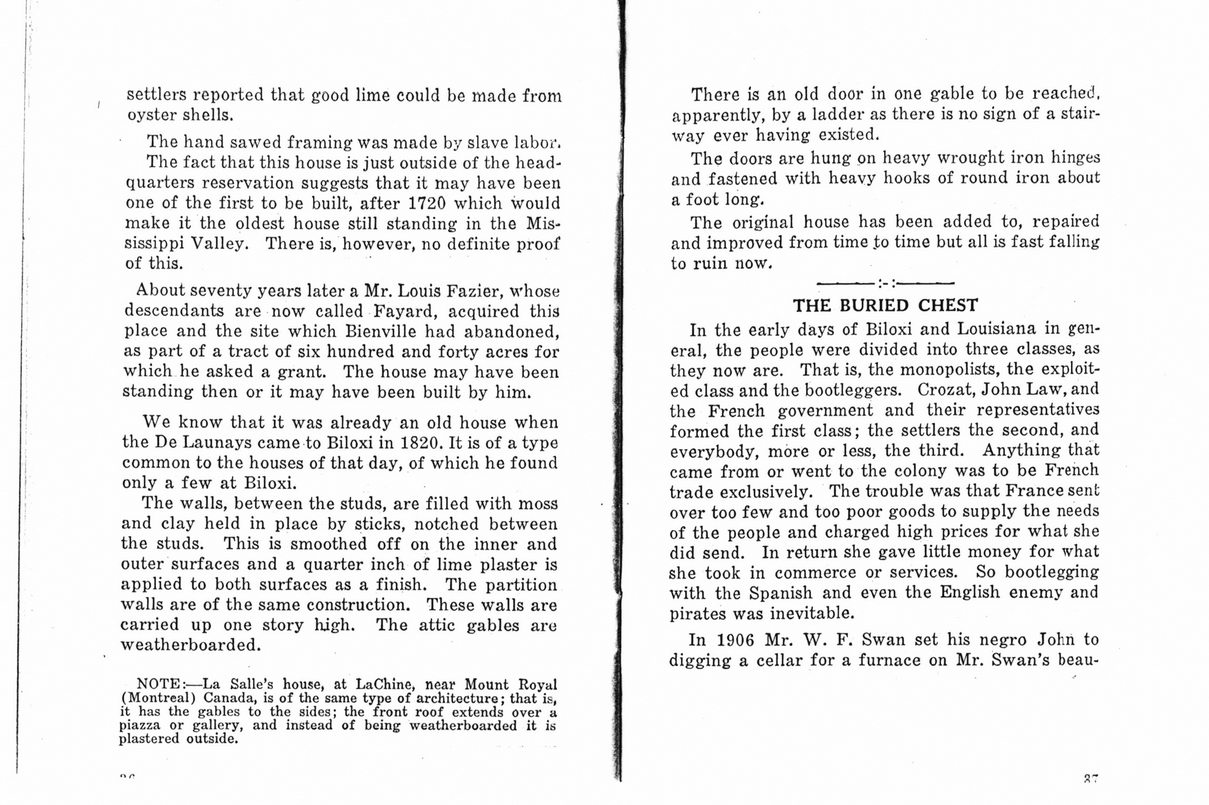This text was obtained via automated optical character recognition.
It has not been edited and may therefore contain several errors.
settlers reported that good lime could be made from oyster shells. The hand sawed framing was made by slave labor. The fact that this house is just outside of the headquarters reservation suggests that it may have been one of the first to be built, after 1720 which would make it the oldest house still standing in the Mississippi Valley. There is, however, no definite proof of this. About seventy years later a Mr. Louis Fazier, whose descendants are now called Fayard, acquired this place and the site which Bienville had abandoned, as part of a tract of six hundred and forty acres for which he asked a grant. The house may have been standing then or it may have been built by him. We know that it was already an old house when the De Launays came to Biloxi in 1820. It is of a type common to the houses of that day, of which he found only a few at Biloxi. The walls, between the studs, are filled with moss and clay held in place by sticks, notched between the studs. This is smoothed off on the inner and outer surfaces and a quarter inch of lime plaster is applied to both surfaces as a finish. The partition walls are of the same construction. These walls are carried up one story high. The attic gables are weatherboarded. NOTE:—La Salle’s house, at LaChine, near Mount Royal (Montreal) Canada, is of the same type of architecture; that is, it has the gables to the sides; the front roof extends Over a piazza or gallery, and instead of being weatherboarded it is plastered outside. There is an old door in one gable to be reached, apparently, by a ladder as there is no sign of a stairway ever having existed. The doors are hung on heavy wrought iron hinges and fastened with heavy hooks of round iron about a foot long. The original house has been added to, repaired and improved from time .to time but all is fast falling to ruin now. THE BURIED CHEST In the early days of Biloxi and Louisiana in general, the people were divided into three classes, as they now are. That is, the monopolists, the exploited class and the bootleggers. Crozat, John Law, and the French government and their representatives formed the first class; the settlers the second, and everybody, more or less, the third. Anything that came from or went to the colony was to be French trade exclusively. The trouble was that France sent over too few and too poor goods to supply the needs of the people and charged high prices for what she did send. In return she gave little money for what she took in commerce or services. So bootlegging with the Spanish and even the English enemy and pirates was inevitable. In 1906 Mr. W. F. Swan set his negro John to digging a cellar for a furnace on Mr. Swan’s beau-

Biloxi Historical-Sketch---Bremer-(20)